Review
Mazda has turned to Chinese partner Changan to fast-track development of the 6e and offer drivers a credible alternative to the VW ID7 and Tesla Model 3. It’s sleek and stylish, has an impressively sumptuous cabin and is engaging to drive – but it’s choice of batteries is perplexing, and the tech interface will be a disappointment to existing Mazda drivers.
Overview
To date, Mazda’s approach to electrification is unlikely to win any business strategy awards. The wilfully left-field MX-30 had neither the range nor the versatility to shoulder aside more mainstream competition, and the addition of the range-extender variant did little to change opinion.
That looks set to change with the arrival of the all-electric 6e, a striking family hatch that’s been developed in conjunction with long-term Chinese partner Changan, one of China’s three automotive giants. Although it shares its hybrid skateboard underpinnings with the from Deepal, Changan’s EV-only marque, Mazda claims its engineering teams were fully in control when developing the 6e’s steering, brakes and suspension. And Mazda’s designers have done a solid job of disguising the L07-donated rear-wheel drive underpinnings, peppering the 6e with the company’s familiar design motifs – piercing headlights, circular rear lamps, winged grille and cleanly sculpted sheetmetal are all present and accounted for.
The understandable focus on left-hand drive production means the 6e is now available in Europe, but right-hand drive cars will only arrive here around May next year. There’s no official world on pricing, but based on European prices, we expect the UK range to start at £39,000 to face up to established rivals like the Volkswagen ID7, Polestar 2 and the Tesla Model 3.
Comfort and practicality
The model we drove was in top-drawer Takumi Plus specification, and its combination of rock-solid build quality, panoramic sunroof, excellent 14-speaker Sony audio system, honey-coloured upholstery and leather, and generous levels of standard safety and luxury equipment create a tactile and lavish cabin with deep-seated showroom appeal. It was also pleasingly free from overwrought and gauche stylistic flourishes – areas that mark down some Chinese brands competing against sober and understated European rivals.
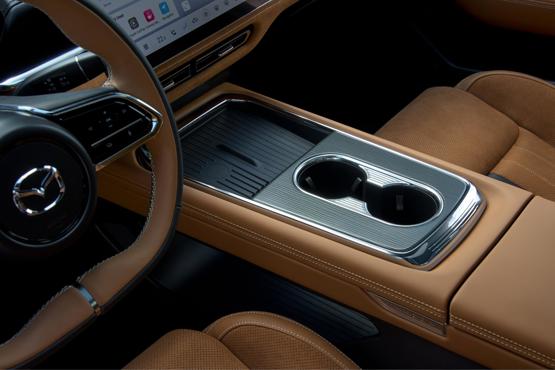
There’s generous room on board for four (that rear bench is heavily scalloped for two passengers) but not quite the lounging room you’d expect for car close to five metres long riding on an extended 2,895mm wheelbase. The driving position feels two inches too high – a common ergonomic issue on skateboard-based EVs – and this means rear passengers might find longer journeys slightly uncomfortable. There’s a handy 72-litre frunk under the bonnet that will house charging cables hatch, and the boot swallows a competitive 466 litres, but it’s surprisingly shallow, and the rake of the rear hatch significantly reduces rear visibility.
Safety and technology
The 6e’s cabin may punch well above its weight on the style and equipment fronts, but it’s a crying shame that Mazda, possible the last bastion of ergonomic intelligence and intuitive design, has followed too many manufacturers in creating a button-free cabin, with all controls accessed through seemingly endless menus on the large central screen. It doesn’t feel very Mazda-like at all, with unfamiliar fonts, an unsystematic menu structure and an unwelcome focus on glossy rather than fundamentally useful tech.
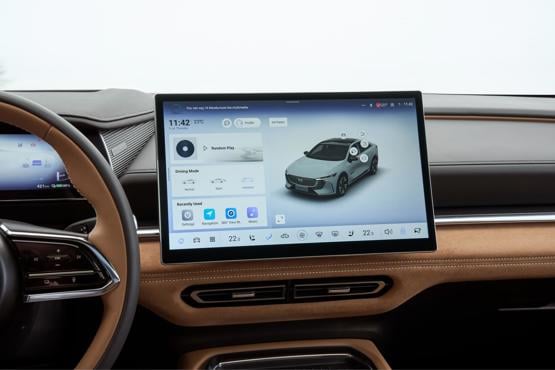
Gesture control – a Mazda first – is available if you want it, as is a Siri-style voice-activated assistant, who piped up unbidden at random intervals, but was unable to complete the simplest of tasks. And don’t think this retrograde step is a corollary of the 6e’s joint development – a quick look at cabin in the new Mazda CX-5 SUV shows this approach is here to stay.
Driveability and range
The UK-bound 6e range is likely to comprise the familiar Takumi and Takumi Plus specifications levels, and the choice of two batteries: a 68.8kWh pack in the standard model and a bigger but lighter 80kWh battery in the long range version. Both drive the rear wheels through a single electric motor that generates 258PS in the standard model and 244PS in the long-range model. Irrespective of battery, both models weigh 1,962kg.
The 68.8kWh lithium iron phosphate battery is good for 297 miles on the WLTP test, and maximum DC charging rate is 165kW for a claimed 10% to 80% charge time of 24 minutes. Opting for the bigger 80kWh battery doesn’t return quite the range and charging benefits you expect. It’s a manganese cobalt oxide unit, so while its extra capacity boosts WLTP range by 45 miles to 342 miles it can only handle 90kW DC charging, which means the 10% to 80% recharge time effectively doubles to 47 minutes. Go further but wait much longer to recharge – that’s going to be a tricky sell in the UK…
It's not going to set the EV dynamic rule book on fire, but for a nigh two-tonne EV the Mazda is a pleasingly engaging steer. It never feels anything but hushed and refined, even up to and beyond UK motorway speeds. The steering is mute but direct and quick, there’s reassuringly strong and immediate bite from the brake pedal, and while a 7.6-second sprint to 62mph and a 109mph top speed are quite modest by EV standards, the 6e always feels brisk and alert.
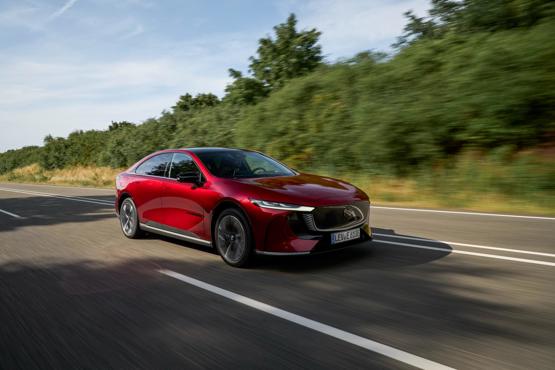
Economy on our test route was decent, but no more, with the 6e returning 3.9mi/kWh. That cocooned cabin and high level of rolling refinement that encourages chauffeur-style driving, but if you do point it down a challenging road, the 6e displays impressive body control and changes direction with a pleasing crispness. The only dynamic red card was how surprisingly stiff and brittle the 6e’s suspension felt when tackling anything other than smooth blacktop on our test route around Leverkusen in Germany.

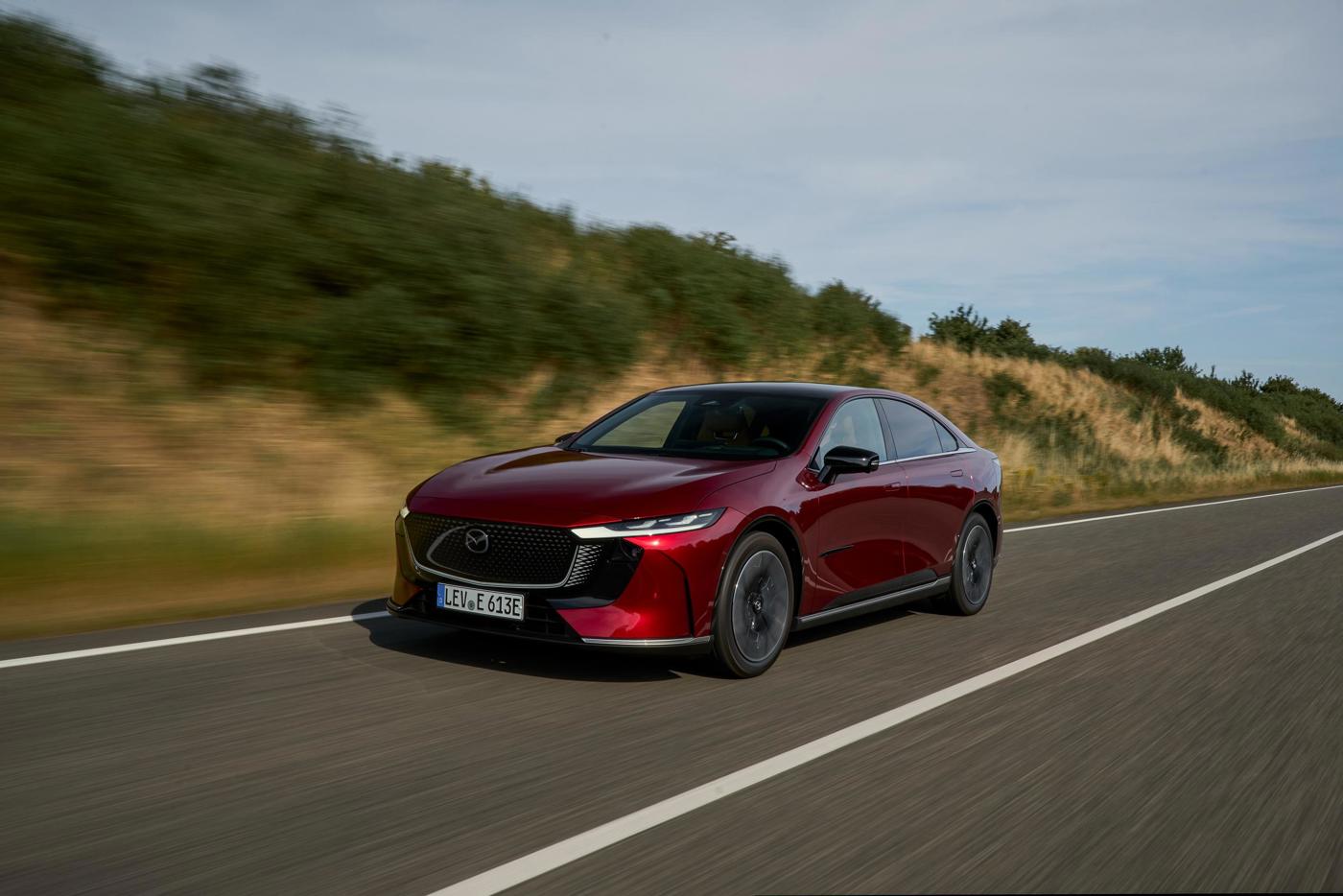
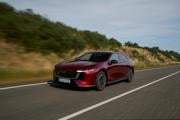
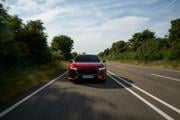
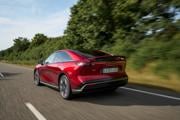
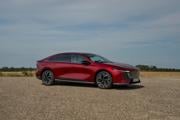
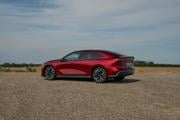
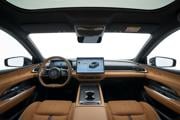
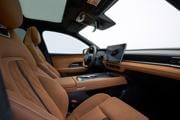

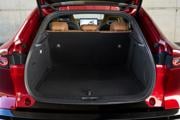
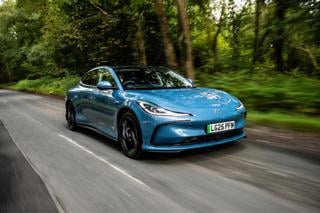
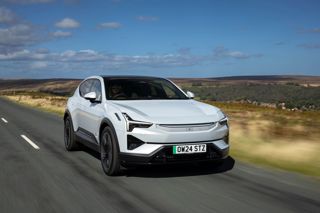
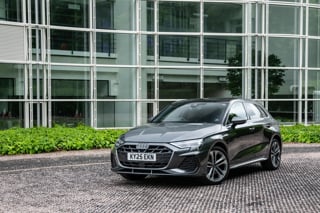
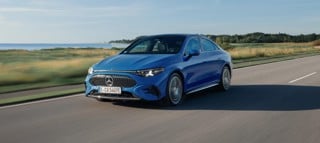
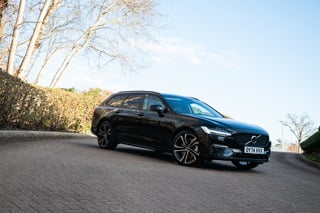



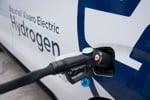

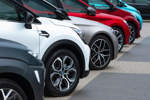


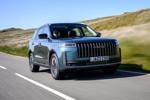



Login to comment
Comments
No comments have been made yet.